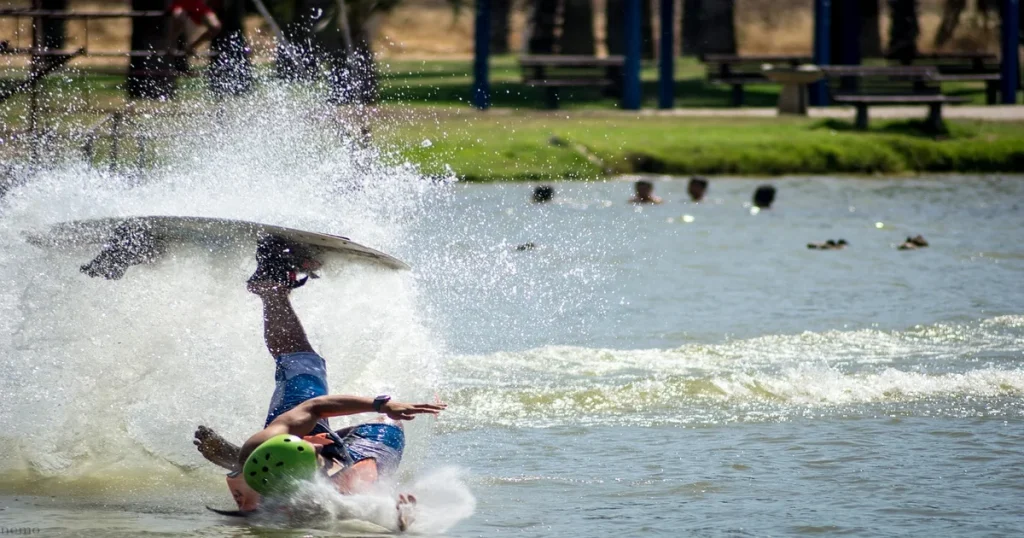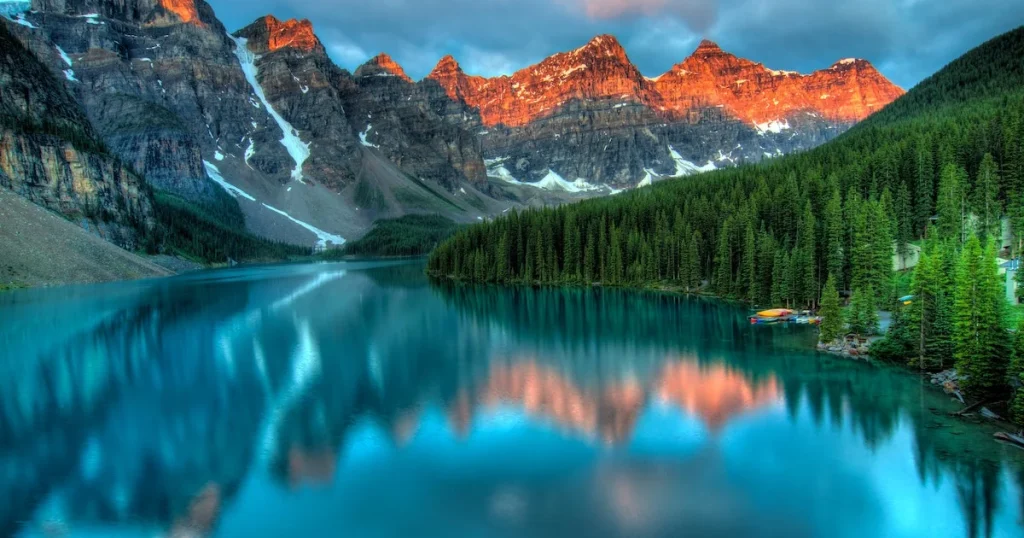The city of Prescott, Arizona, known for its rich history and picturesque landscapes, offers an allure that is hard to resist. Nestled amidst this charm are several beautiful lakes, which add to the tranquility and allure of the area. As inviting as these bodies of water may look, one may wonder, “Why can’t you swim in the lakes in Prescott, Arizona?” The reasons, as it turns out, are rooted in concerns about public safety, environmental preservation, and local regulations.
Public health and safety encompass the policies and measures implemented to protect the health, well-being, and safety of a community. This involves a wide range of actions, from promoting healthy behaviors and preventing diseases to managing environmental hazards and enforcing safety regulations.
Understanding public health and safety requires recognizing the complex interplay between individual behaviors, community practices, environmental factors, and policy measures. It is crucial to be aware of and adhere to these guidelines as they are designed to ensure the overall well-being and safety of everyone in the community.

Brief on Public Health and Safety Regulations
Public health and safety regulations are designed to prevent accidents, diseases, and other harmful occurrences in society. These rules can cover anything from food safety to recreational activities, including swimming. In many cases, these guidelines are influenced by local environmental factors and cultural considerations.
When it comes to recreational water bodies, public health officials aim to prevent waterborne diseases and physical injuries. They might restrict certain activities based on the water quality, presence of harmful creatures, or physical characteristics of the body of water. For example, swimming might be prohibited due to the risk of drowning, dangerous currents, or poor water quality.
The ‘No Swimming’ Rule in Prescott
Public health and a new safety play a crucial role in the governing of recreational activities in Prescott. Interestingly, the city’s lakes have a story of their own.
The ‘No Swimming’ rule in Prescott’s lakes has a long-standing history. The city’s lakes were never officially designated as swimming areas. Over the years, this policy has been upheld for various reasons, including but not limited to ecological preservation and public health concerns.

Having understood the genesis of the ‘No Swimming’ rule, let’s explore the current state of affairs.
Current Regulations and Their Implications
As of now, the City of Prescott maintains that swimming is not permitted in any of the city’s lakes. The implications of these regulations are far-reaching. Not only do they affect the recreational options available to residents and visitors, but they also reflect the city’s commitment to maintaining the health and safety of its population.
But one might wonder, “What makes Prescott’s lakes unique? Why can’t they be used for swimming like in other places?” It is in the answers to these questions that we can find the essence of Prescott’s ‘No Swimming’ rule.
Prescott’s Unique Lake Ecosystem
Prescott’s lakes are more than just bodies of water; they host a delicate balance of life, making them vibrant ecosystems that need to be preserved.
Prescott’s lakes are teeming with diverse flora and fauna. From waterfowl like ducks and herons to fish species such as bass and catfish, the lakes support a wide array of life. The aquatic vegetation further adds to the biodiversity, providing habitats for several organisms.
Despite the beauty and diversity, human interaction, such as swimming, could disrupt these ecosystems. It can lead to the disruption of nesting sites, pollution, and the introduction of non-native species, which can threaten the local biodiversity.
Ecological Sensitivity
The ecosystems within Prescott’s lakes are incredibly sensitive. Alterations to the physical characteristics of the water body, pollution, or disturbances to wildlife can have cascading effects on the health of the lake. For example, excess human activity could lead to erosion, which may increase sedimentation in the water, affecting water clarity and the health of aquatic life.
As such, restrictions like the ‘No Swimming’ rule act as a protective measure to maintain the integrity of these sensitive ecosystems.
Prescott Lakes as Reservoirs
One of the essential functions of Prescott’s lakes is to serve as reservoirs for the city. This critical role directly impacts the ‘No Swimming’ rule.
Prescott’s lakes, such as the Goldwater Lake and Watson Lake, play a critical role in providing water to the city. They serve as reservoirs, storing water that is treated and then supplied to residents for everyday use.
Allowing swimming in these lakes could introduce contaminants, potentially compromising the water supply and making the treatment process more complex and costly.

Swimming in reservoirs that serve as a water supply poses potential health risks. Bacteria and other pathogens can be introduced into the water, which can pose challenges during the water treatment process. While treatment methods are designed to eliminate these risks, prevention is a more reliable and cost-effective approach. Hence, the ‘No Swimming’ rule.
Water Quality Concerns
Ensuring water quality is a fundamental aspect of public health and safety. For Prescott’s lakes, several factors influence water quality.
Water quality refers better to the chemical, physical, and biological characteristics of water. Factors like temperature, pH level, and the presence of contaminants and microorganisms play a role in determining water quality. High-quality water is crucial for the health of the lake’s ecosystem and for its utility as a water source.
Prescott’s lakes can experience issues that impact water quality, such as algal blooms and the presence of contaminants. Algal blooms, triggered by an excess of nutrients in the water, can reduce oxygen levels, harm aquatic life, and even release toxins. Human activity, including swimming, can exacerbate these issues by introducing additional nutrients and contaminants.
Potential Hazards in the Lakes
Prescott’s lakes, while serene and beautiful, harbor potential hazards that could pose risks to swimmers.
Physical hazards in a lake can vary widely, from submerged objects and sudden changes in depth, to strong currents or cold water temperatures. These hazards can increase the risk of injuries or other dangerous situations for swimmers.
Specific Hazards in Prescott Lakes
Prescott’s lakes have their own set of potential hazards. For instance, the lakes’ rocky terrains can pose a risk for swimmers. In addition, water levels in the lakes can fluctuate depending on the season and amount of rainfall, which can expose or hide potential hazards. The absence of lifeguards or other safety measures further raises the risk.
These hazards contribute to the ‘No Swimming’ rule, ensuring the safety of residents and visitors alike.
Legal Implications
Adherence to rules and regulations plays a significant role in maintaining public safety and order. In the context of the ‘No Swimming’ rule, there are legal implications to consider.
From a legal perspective, the city has a responsibility to maintain safety in public spaces, including lakes. If swimming were allowed and an accident occurred, the city could potentially be held liable. This risk is especially high given the potential hazards in the lakes.
The ‘No Swimming’ rule in Prescott is enforced by local law enforcement and park officials. Violation of this rule can result in penalties, reinforcing the importance of abiding by local regulations for the safety of all.
Other Cities with Similar ‘No Swimming’ Rules
Prescott is not alone in having ‘No Swimming’ rules for certain bodies of water. Other cities and regions have similar regulations for a variety of reasons.
Across the United States, there are numerous bodies of water where swimming is prohibited. Reasons can range from the protection of sensitive ecosystems, the presence of dangerous wildlife, and water contamination concerns, to lack of resources for supervising swim areas.
Several cities manage to balance the recreational use of water bodies with conservation efforts. Studying these examples can provide valuable lessons on effective management strategies, potentially informing future policies in Prescott.
Recreational Alternatives to Swimming in Prescott’s Lakes
Despite the ‘No Swimming’ rule, there are numerous ways for residents and visitors to enjoy Prescott’s lakes.
While swimming is not permitted, other water-based recreational activities are allowed and popular. For instance, kayaking, canoeing, and fishing are all common ways that people engage with the lakes. These activities allow for the enjoyment of the lakes without the potential disruptions or dangers posed by swimming.
The areas surrounding the lakes also offer numerous recreational opportunities. Hiking trails offer stunning views of the water and wildlife. Picnic areas provide a space for families and friends to gather and enjoy the natural beauty of the area. Bird watching is also a popular activity, thanks to the diverse avian species found near the lakes.
Frequently Asked Questions (FAQs)
A deeper understanding of a subject often comes from asking questions. Here are answers to some of the most commonly asked questions about Prescott’s lakes and the ‘No Swimming’ rule.
Why are there ‘No Swimming’ signs around Prescott’s lakes?
The ‘No Swimming’ signs are put up to enforce the city’s regulations for the safety of its residents and visitors and to maintain the ecological balance of the lakes.
What happens if someone violates the ‘No Swimming’ rule?
Violating the ‘No Swimming’ rule can result in penalties, including fines. It’s important to respect these local rules and regulations for everyone’s safety and well-being.
Are there any exceptions to the ‘No Swimming’ rule?
The rule is in place for all residents and visitors, without exception. This ensures equal treatment and safety for all.
Conclusion: Why can’t you swim in the lakes in Prescott Arizona?
Swimming might seem like a natural use for a lake, but when it comes to the lakes in Prescott, Arizona, there are multiple layers of reasoning behind the ‘No Swimming’ rule. From maintaining the delicate balance of the local ecosystem to ensuring the safety of the public and preserving the quality of the city’s water supply, this rule serves multiple critical functions.
Understanding these reasons can help us appreciate the beauty of Prescott’s lakes in a way that respects both the natural world and our fellow citizens. It reminds us that while nature provides us with spaces for recreation and enjoyment, it also requires us to act responsibly and consider the broader implications of our actions.



Leave a Comment
You must be logged in to post a comment.